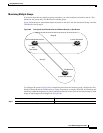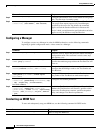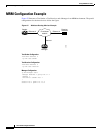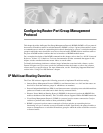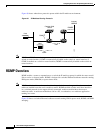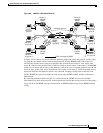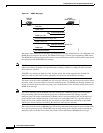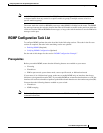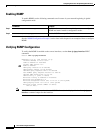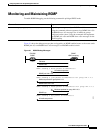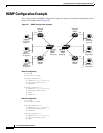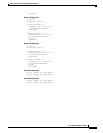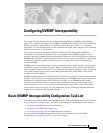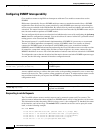
Configuring Router-Port Group Management Protocol
RGMP Configuration Task List
IPC-531
Cisco IOS IP Configuration Guide
Note An RGMP-enabled router cannot send an RGMP leave <G> message until the router does not receive
or forward traffic from any source for a specific multicast group (if multiple sources exist for a
specific multicast group).
The router sends the switch an RGMP bye message when RGMP is disabled on the router. The RGMP
bye message instructs the switch to forward the router all IP multicast traffic on the port from which the
switch received the PIM and RGMP hello messages, as long as the switch continues to receive PIM hello
messages on the port.
RGMP Configuration Task List
To configure RGMP, perform the tasks described in the following sections. The tasks in the first two
section are required; the tasks in the remaining section are optional.
• Enabling RGMP (Required)
• Verifying RGMP Configuration (Optional)
See the end of this chapter for the section “RGMP Configuration Example.”
Prerequisites
Before you enable RGMP, ensure that the following features are enabled on your router:
• IP routing
• IP multicast
• PIM in sparse mode, sparse-dense mode, source specific mode, or bidirectional mode
If your router is in a bidirectional group, make sure to enable RGMP only on interfaces that do not
function as a designated forwarder (DF). If you enable RGMP on an interface that functions as a DF, the
interface will not forward multicast packets up the bidirectional shared tree to the rendezvous point (RP).
You must have the following features enabled on your switch:
• IP multicast
• IGMP snooping
Note Refer to the Catalyst switch software documentation for RGMP switch configuration tasks and
command information.



